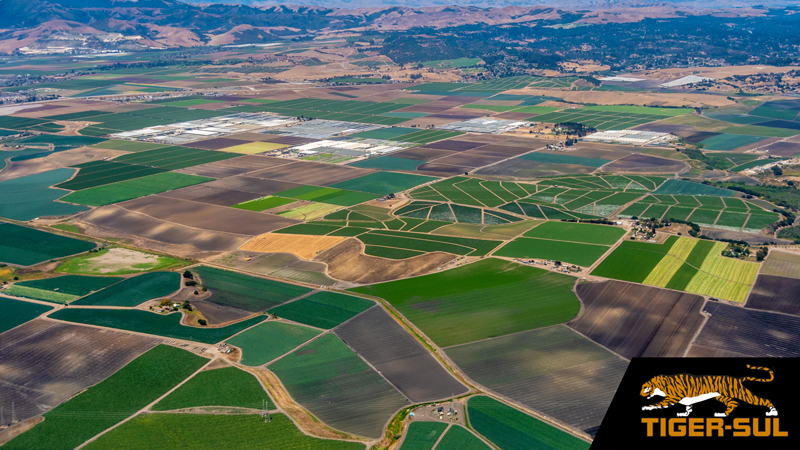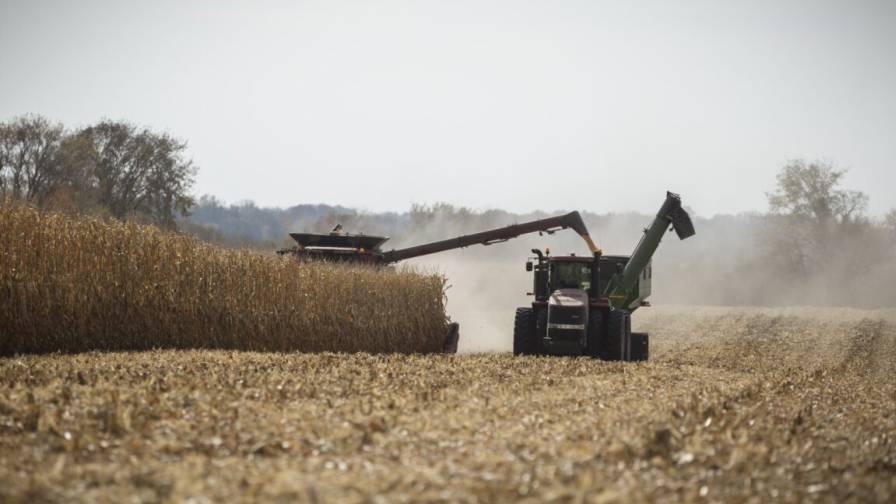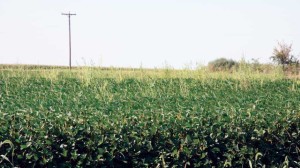Adjusting To The New Reality Of Weed Control
For the past several years, numbers have told the tale of the nation’s spreading weed resistance problem. By best estimates, millions of acres of farmland spread out across more than two dozen states are infested with hard-to-control or downright herbicide-resistant weeds.
However, to many in the agricultural community, things tend to come to money. And according to Allen Gent, U.S. soybean manager for Bayer CropScience, the growing weed resistance was put into this kind of perspective recently for him by a single cotton grower.
“The landscape has changed quite significantly over the past several years with weed control,” says Gent. “One cotton grower summed up his weed problem to me very simply. He told me that he had spent $110,000 on different chemistries to control weeds in his fields this year. And then he spent another $130,000 on migrant workers to clean up his fields by hand.”
Lindsey Hecht, U.S. product manager for soybean herbicides and glyphosate at Dow AgroSciences, agrees that the world of weed control has fundamentally changed for today’s ag retailers and their grower-customers. “Herbicide resistant weeds can quickly outcompete the crop if growers do not stay ahead of this problem and continue to evolve their herbicide programs,” says Hecht.
James Hay, business director, North America, DuPont Crop Protection, reiterates this view. “Naturally occurring resistant weed populations can happen when herbicides affecting a single site of action on a targeted weed species are applied year-after-year on the same field,” says Hay. “Those resistant biotypes can survive the next herbicide application, even when done correctly.”
To illustrate this point, the journal Weed Science recently reported on a study conducted over four years in four Arkansas cotton fields involving one of today’s hardiest resistant weeds, Palmer amaranth. For this study, researchers sowed 20,000 glyphosate-resistant Palmer amaranth seeds — which represented approximately 2% of the seed a single plant tends to produce each year — into a one-square mile area during Year One. The plants that resulted from these seeds were not managed, but allowed to grow and spread.
During the first growing season, researchers noted a separate patch of Palmer amaranth emerged 375 feet from the original location in one field. By Year Two of the study, resistant Palmer amaranth plants had expanded to reach field boundaries and infested 20% of the field area. This resulted in decreased crop yields and significant problems with the cotton harvest.
“By the third growing season, glyphosate-resistant Palmer amaranth had completely colonized the fields, making the cotton crop impossible to harvest,” wrote the journal. “The expansion of resistant weeds seen in this research helps to explain the rapid takeover of many farms by glyphosate-resistant Palmer amaranth, particularly when glyphosate was the only means of weed control. It also demonstrates the need for a zero tolerance threshold of weed management — keeping all resistant-prone weeds from escaping control — to prevent loss of an herbicide or technology.”
The Grower’s Mindset
Still, says Bayer’s Gent, getting this message across to the grower community remains a daunting task, for ag retailers and crop protection product suppliers alike. “The biggest challenge we face today is getting growers to realize how they handle weed control in soybeans is going to be fundamentally different than it has been for the past few decades,” he says. “When Roundup Ready crops were launched in 1996, the world of weed control got very, very simple. But it’s not simple anymore.”
For the most part, says Gent, today’s growers tend to fall into two distinct camps when it comes to handling weed control. On one side are those growers who are doing all they can to keep weed resistance from occurring by rotating their crops and crop protection products each season. But on the other side are ones who keep taking the “simple route” mapped out by the introduction of glyphosate-resistant crops with the belief that some new weed control is “just around the corner.”
“These growers always think that the next magic bullet herbicide is coming,” says Gent. “I equate this belief to my daughter. She can’t fathom the notion that a new iPad isn’t coming. She’s grown up with this kind of technology, and some company has always delivered ‘the next big thing,’ tech-wise. That’s where these growers are.”
But this is a short-sighted view, he continues. “The last really new mode of action in soybeans was launched in the 1980s,” says Gent. “Nobody has a new mode of action in the pipeline today. That means one won’t appear for the next 10 to 15 years at least. Agriculture will have to do something different in the interim.”
For starters on this front, several crop protection product suppliers like Monsanto Co. have launched educational campaigns such as its Diversified Weed Management Practices series. Others such as BASF have promoted “Quick Tips” for weed control. These include regularly scouting crop fields to spot weeds, successfully identifying what weeds are present and determining the proper application timing needed to successfully manage these weeds.
“Timing is everything,” says Luke Bozeman, technical market manager, herbicides for BASF. “Once weeds have emerged, there is a limited window for applying a post-emergence herbicide before the weeds grow too large to control or crops are beyond the size that allows an herbicide application. It is imperative that these weeds are controlled before they go to seed so that their progeny aren’t around to affect yield in the next growing season.”
More Chemistries
Besides education, many growers have been motivated to employ more varied chemistries to control weeds. In fact, according to a recent study of 130 U.S. corn, soybean and wheat growers sponsored by DuPont, more than half have changed their herbicide tank mix strategies within the past three years. According to Mike Meyer, field development manager for the company, the No. 1 reason given for changing tank mixes was to deal with or help prevent the spread of herbicide-resistant weeds.
“Growers are taking the risk of herbicide-resistant weeds seriously and are taking steps to address the problem,” says Meyer. “To reduce issues with herbicide resistance, many growers and applicators are building tank mixes that include herbicides with residual control and different modes of action. Those changes not only address herbicide-resistant weeds, but also reduce overall weed competition, including early weeds and second flushes of weeds that can have a significant impact on yield.”
A BASF-sponsored growers survey in 2013 showed similar results. In this study, 76% of the growers polled said they were already changing or planned to change their weed management programs to combat glyphosate-resistant weeds. Furthermore, 88% said they were using multiple or overlapping sites of action in their weed control programs.
For ag retailers, this has led to increased activity in herbicide sales. “I’ve recently visited with several ag retailers and cooperatives and they’ve all told me the same thing,” says Bayer’s Gent. “When they have gone over their growth projections for crop protection products the past year, and looked out even five or six years down the line, most of their growth is coming from growers using more and different soybean herbicides than they have in the past.”
According to Gordon Vail, Ph.D., technical product lead for herbicides for Syngenta Crop Protection, this growth will be driven largely by the continued spread of herbicide-resistant weeds across American farm fields. “The longevity of any herbicide will continue to be challenged if it’s used as a standalone option,” says Vail. “The trend of increasing herbicide types will continue, with growers using more crop protection products simply because they have no other choice. And now, you are starting to see very herbicide-resistant weeds such as Palmer amaranth appear in Northern states such as Indiana. And the fact remains that we will probably not see another 100-year molecule in crop protection such as glyphosate or atrazine again in our lifetime, so growers will have to adapt in other ways.”
Both the crop protection products and seed sectors are gearing up for this new weed control reality accordingly. For example, earlier this year, Syngenta introduced its Acuron product to the market, which features three different modes of action to combat hard-to-control weeds such as Palmer amaranth, waterhemp and morning glory. In 2015, 2,4-D and dicamba-resistant crops are expected to gain the necessary regulatory approvals to be used by growers. Other products, such as Bayer’s LibertyLink cropping system, will also receive an increased market push.
However, as Bayer’s Gent warns, none of these will be as simple to use as glyphosate-resistant crops were back in the day. “LibertyLink today requires much different management practices vs. what was needed for Roundup Ready,” he says. “We recommend growers using LibertyLink spray their weeds at a smaller height than they did with glyphosate. And it will probably be the same for those growers using the Enlist or Xtend cropping systems. They are going to be much more complicated systems than what growers have been used to, and I don’t know if they are really understanding that just yet.”







